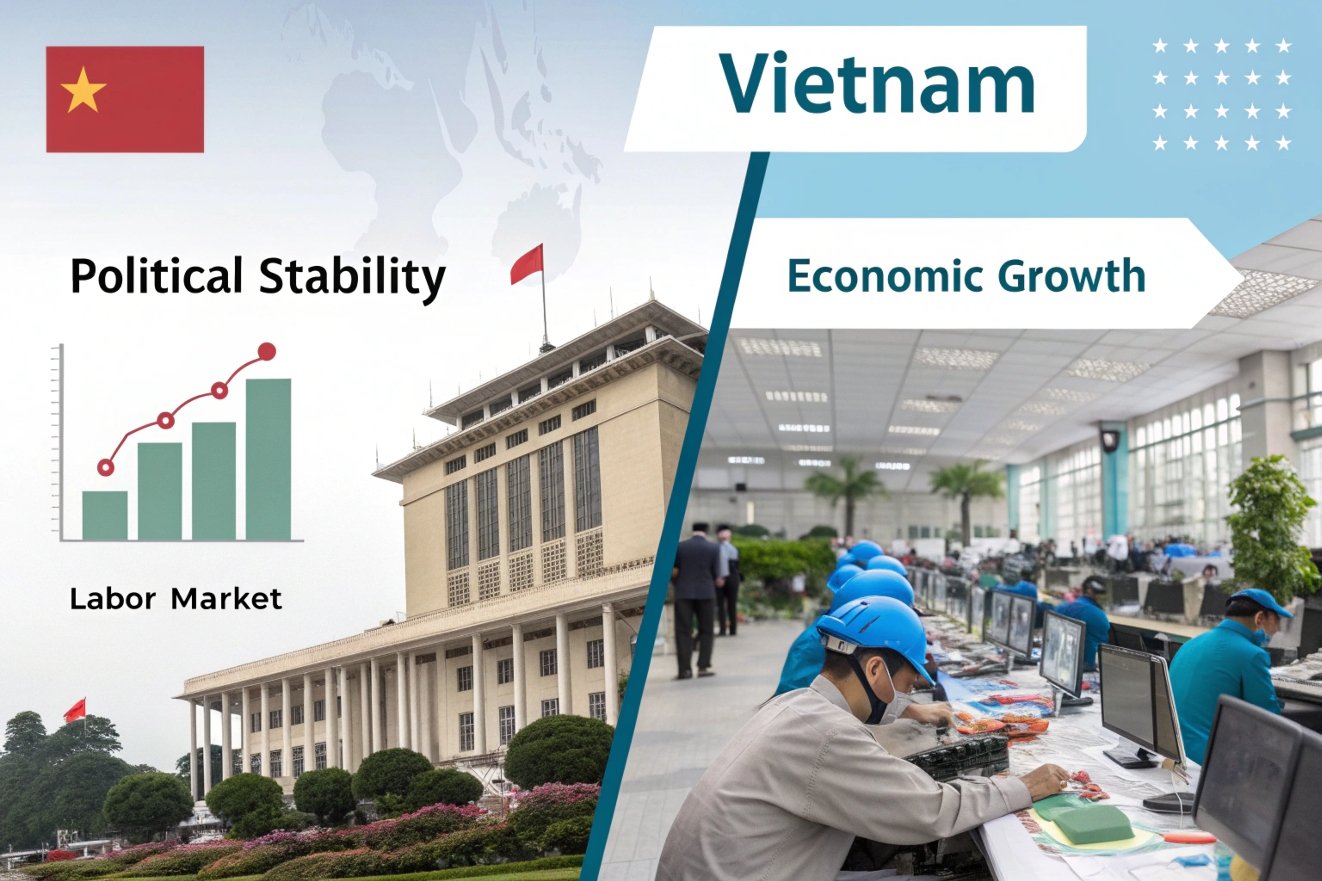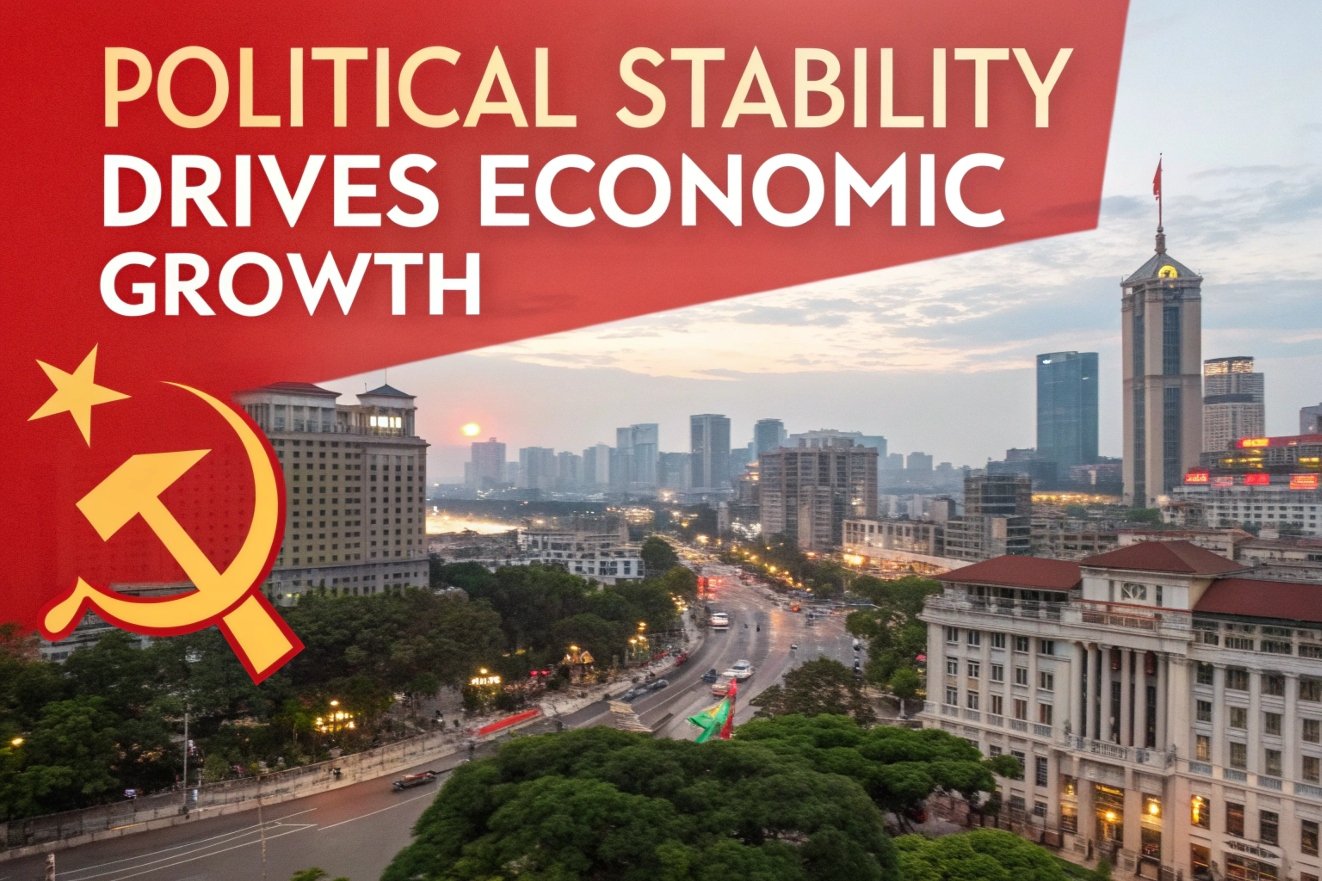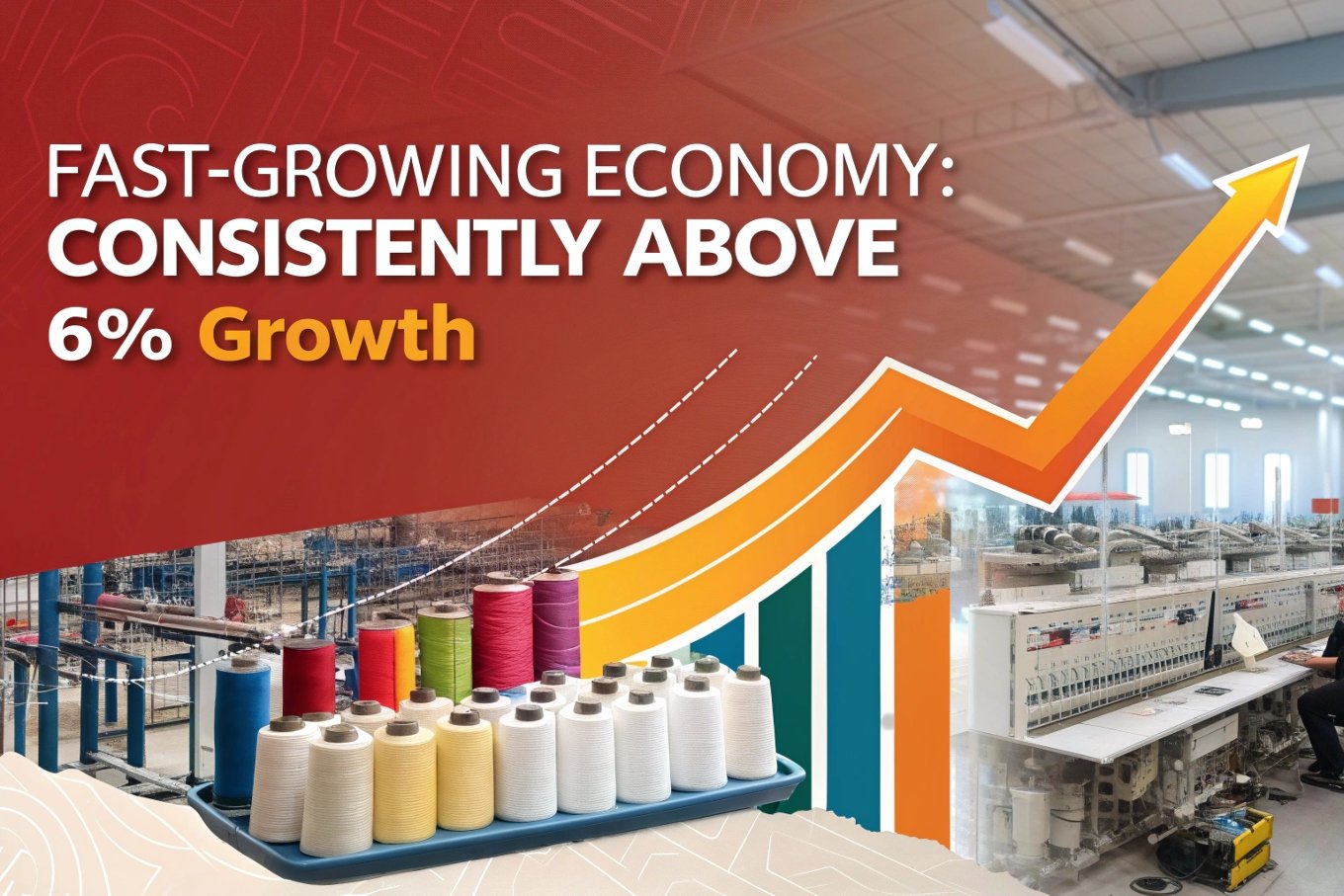
Vietnam has been gaining attention as a promising destination for business and investment. However, it’s crucial to assess the stability of its political, economic, and labor environments before committing to any operations. Let’s explore if Vietnam offers the stability necessary for business success.
Vietnam has made significant strides in maintaining political stability, fostering economic growth, and cultivating a growing labor market. However, like any emerging market, there are some challenges to consider when establishing or expanding a business in the country.
Is Vietnam a Politically Stable Country?
Vietnam has experienced remarkable political stability1 over the last few decades. As a single-party state, the Communist Party of Vietnam (CPV) holds the central authority, ensuring continuity in governance. This structure has contributed to a relatively stable political environment, which is appealing to foreign investors.
The CPV’s control over political decisions has allowed for focused development strategies, and the government has shown an ability to manage domestic issues effectively. However, critics argue that the lack of political pluralism can be limiting, especially in terms of public discourse and political freedoms. Despite this, the government has remained committed to reforms aimed at improving the country’s business climate.

Vietnam’s political stability has contributed significantly to its economic progress. Political decisions related to trade policies and industrialization have helped transform the country into one of the fastest-growing economies in Southeast Asia.
Key Points:
| Factor | Details |
|---|---|
| Government Structure | Single-party state under the Communist Party |
| Political Stability | High, with a focus on long-term policy continuity |
| Public Freedom | Limited, as the government controls political expression |
Though there is stability, it is important to keep in mind that certain sectors may face challenges related to regulatory issues or limited freedom of expression.
Is Vietnam Doing Well Economically?
Vietnam has shown impressive economic growth2 in recent years. It is one of the fastest-growing economies in Asia, with GDP growth consistently above 6%. This growth has been driven by manufacturing and export sectors, with key industries like electronics, textiles, and agriculture seeing significant expansion.
Vietnam’s economy is diversifying, supporting long-term stability. The government has prioritized economic reform, foreign investment3, and industrialization, especially in sectors such as IT, renewable energy, and high-tech manufacturing. Vietnam also benefits from global supply chain shifts as companies look for alternatives to China.
Despite these strengths, challenges remain, including infrastructure development, rising debt, and income inequality.

Key Economic Indicators:
| Indicator | Status |
|---|---|
| GDP Growth Rate | Consistently above 6% |
| Economic Diversification | Growing in sectors like IT, renewable energy, etc. |
| Infrastructure Development | Needs improvement, especially in transport |
Vietnam’s FTAs, such as the EU-Vietnam Free Trade Agreement (EVFTA), have opened up new markets for Vietnamese exports and created more opportunities for foreign investment.
What is the Human Resource Environment for Business in Vietnam?
Vietnam’s labor market4 offers a large, young, and increasingly skilled workforce. The country has one of the youngest populations in Asia, with a median age of around 30 years. This demographic advantage makes Vietnam attractive for businesses looking to hire skilled labor at competitive wages.
In terms of education, Vietnam has made significant improvements, particularly in STEM fields. The government has also focused on vocational training programs5 to meet the demands of the manufacturing sector.
However, businesses may face challenges in skill gaps in certain high-tech sectors and competition for talent. Wages are rising, particularly in urban areas, but remain low compared to neighboring countries like China.

Labor Market Overview:
| Factor | Details |
|---|---|
| Workforce Age | Predominantly young, with a median age of around 30 |
| Skill Level | Improving, especially in manufacturing and tech |
| Wage Levels | Low relative to China, but rising, especially in cities |
The country’s labor laws are generally favorable to workers, with regulations on minimum wages and working conditions. However, businesses need to understand the local labor code to avoid compliance issues.
Conclusion
Vietnam’s political, economic, and labor environments offer a relatively stable foundation for businesses. The political climate is controlled and stable, contributing to long-term growth. Economically, Vietnam is on a solid growth trajectory, and its labor market provides a young and growing workforce. However, companies must stay informed and adapt to the evolving landscape to succeed.
Understanding the factors behind Vietnam’s political stability can provide insights into its governance and appeal to investors. ↩
Exploring the drivers of Vietnam’s economic growth can reveal opportunities for investment and business expansion. ↩
Discovering how Vietnam attracts foreign investment can help businesses strategize their entry into this growing market. ↩
Understanding the labor market dynamics in Vietnam can help businesses make informed hiring decisions and strategies. ↩
This link will shed light on the impact of vocational training on the workforce and its relevance to business needs. ↩

